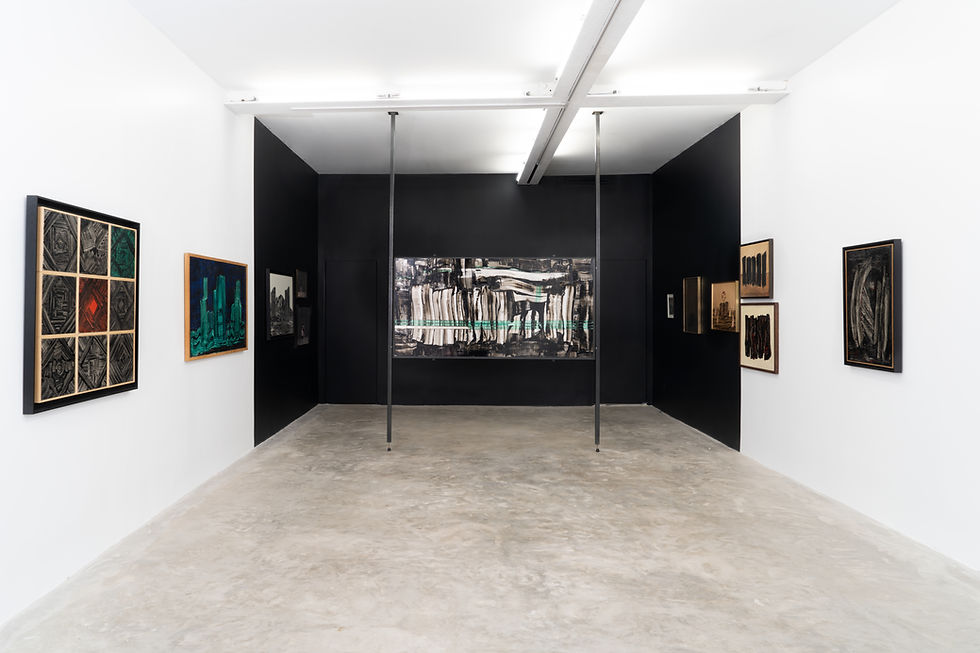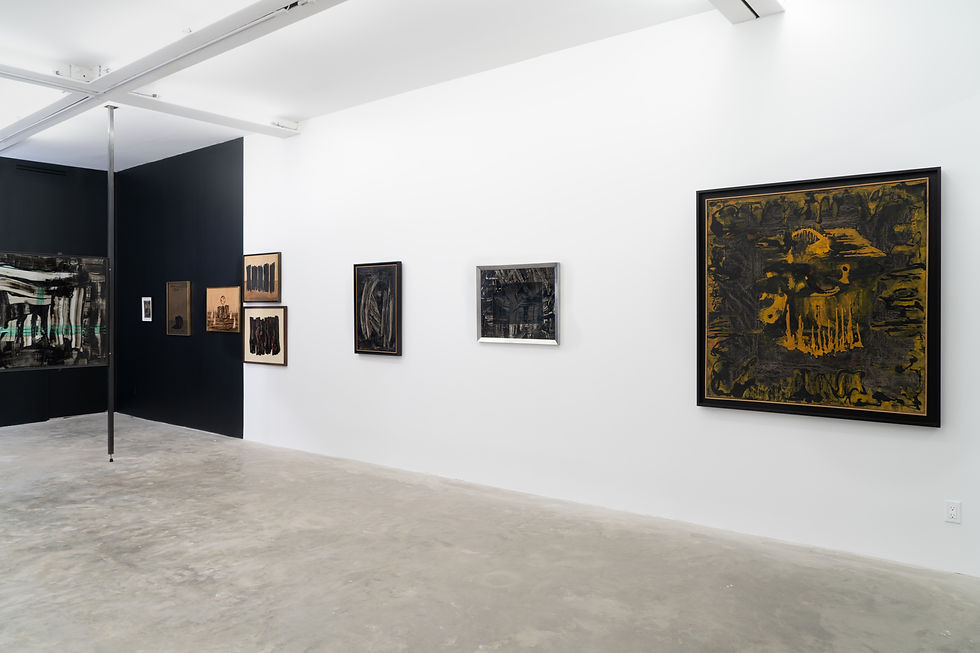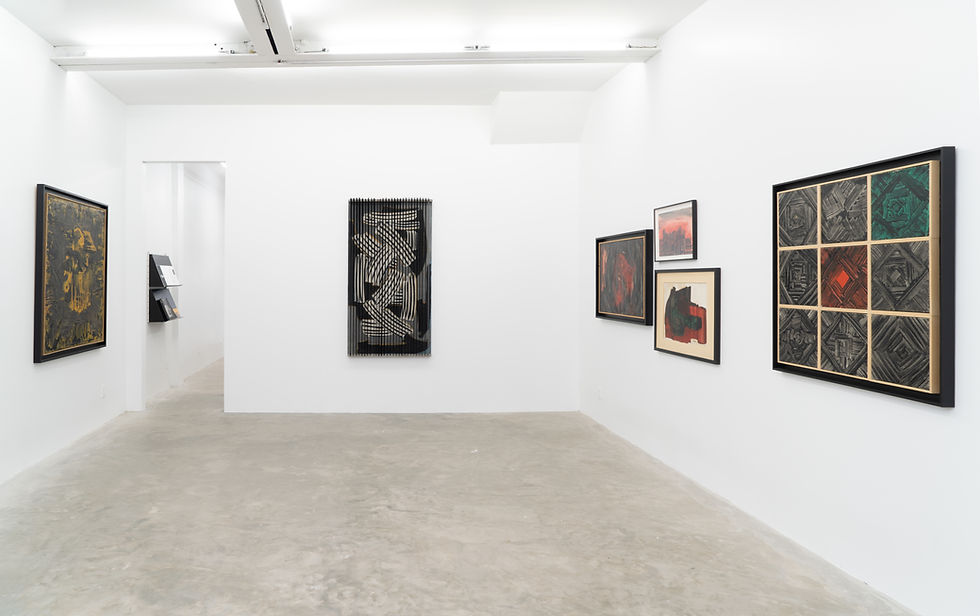Behjat Sadr
May 15, 2023 - October 15, 2023




IAIA is pleased to present the first institutional solo exhibition of Behjat Sadr (1924–2009) in the United States. This exhibition unveils Sadr’s diverse practice, which spanned painting, photography, photomontage and kinetics. Born in Arāk, Iran, Behjat broke through the male-dominated pre-Revolutionary Iranian art world, establishing herself as one of the foremost artists of the 20th century with her biomorphic gestural abstractions that defied the status-quo. This exhibition explores Sadr's engagement with painting by unearthing the deep and inherent relationship between body, memory and medium.
Shortly after completing her studies in Fine Arts at the University of Tehran, where she would later go on to teach, Sadr received a grant to study at the Rome Academy in 1955 where she rose to prominence. In cultivating a distinct visual language which stemmed from the discursive narratives of Western modern art and Persian visual culture, the artist experimented with new modes of expression, and her abstractions evolved into organic forms. Placing her varied surfaces on the floor, Sadr was able to engage her body as a vehicle for painting. At moments, her gestural paintings appear thick and impermeable, in others, organic forms, such as tree trunks and logs, coolly float across the surface. The thick black pigments, reminiscent of oil, serves as a reference to the deeply politicized Iranian commodity, whereas the use of textured meandering lines speak to how nature is being constantly redefined.
By the 1980s, Sadr left a revolutionized Iran to exile in Paris. She was ill, and her battle with cancer constrained her to work on an intimate scale. The resulting collages, composed of photos she had taken of Iran’s landscapes with those showing a glimpse into her new city life, exhibit a tight framing made by the signature brushstroke that are present throughout her oeuvre. These late works best exemplify Sadr’s commitment to the experimentation of medium and the excavation of memory - as well, they reveal the fecund landscape of her mind. By tracing Behjat’s sustained engagement with abstraction over the course of five decades, this exhibition unveils the psychosis of living in a period of instability, exile, modernity and tradition within the communities she orbited.
Born in Arak, Iran, Behjat Sadr (1924-2009) was formally trained at the University of Tehran, Iran, before being awarded a grant to study at the Rome Academy in Italy (1955) and at the Fine Arts School of Naples (1958). Sadr developed a unique visual language, where her gestural abstractions, often made with a palette knife, unveiled her relationship between body, surface and form. Her works have been exhibited in many institutions internationally: Galleria La Bussola, Rome (1958); Venice Biennale (1956, 1962); Musée d’Art Moderne de la Ville de Paris (1963); Grey Foundation, Saint Paul, Minnesota (1971); Musées Royaux des Beaux-Arts de Belgique, Brussels (1972); Centre d’art Le Noroît, Arras (1985); Grey Art Gallery, New York (2010); Asia Society, New York (2013- 2014); Musée d’art modern de la ville de Paris / MAXXI Rome (2014-2015); Balice Hertling Gallery (2022 and 2019); (Paris, France); The Mosaic Rooms, London, UK
